An easy recipe for Pastéis de Nata with ready made puff pastry plus where to find the best traditional Portuguese custard tarts in Paris.
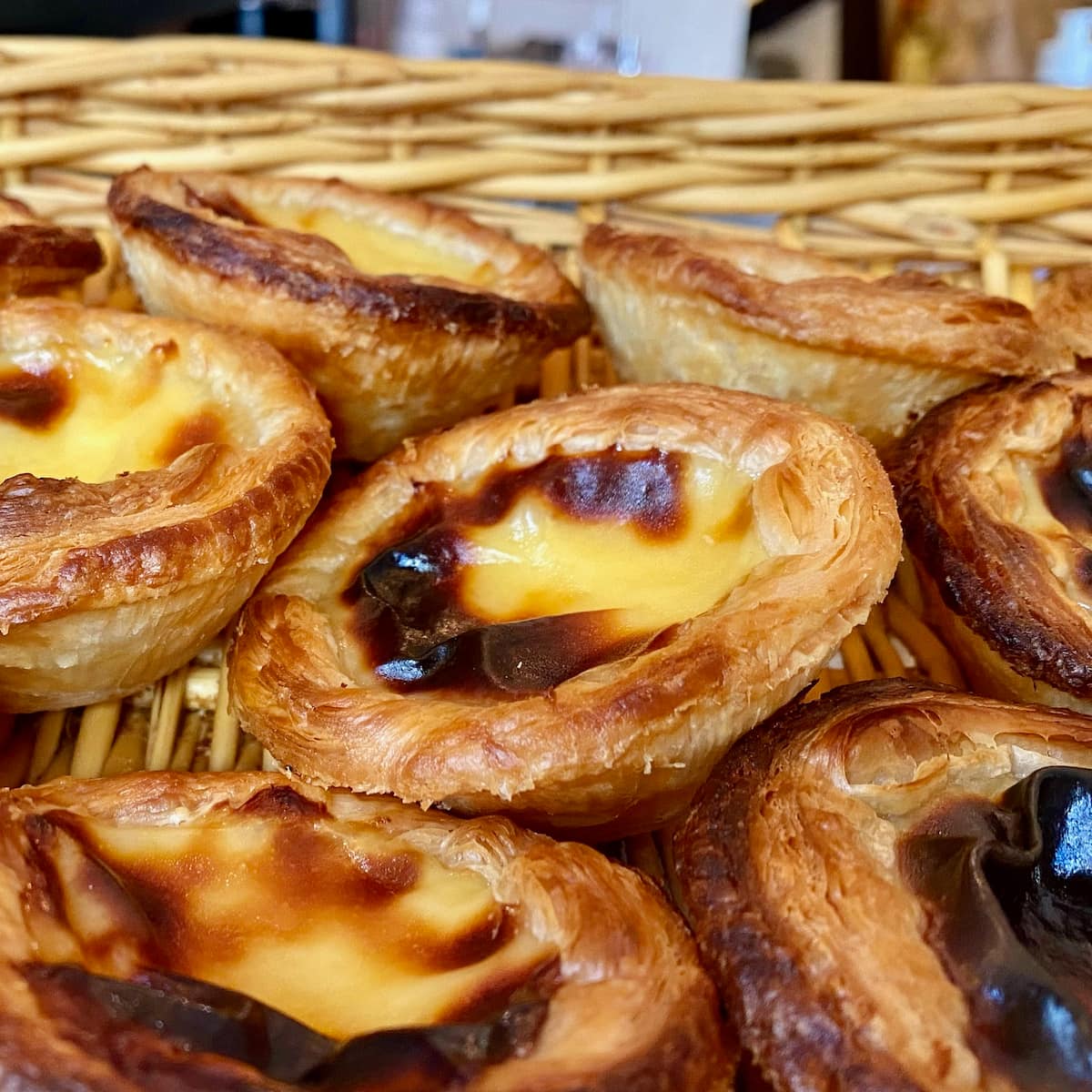
The Best Pastéis de Nata in Paris
For many years, the reference for the best Pastéis de Nata has always been Comme à Lisbonne. The smells of vanilla waft out of their boutiques on both rue du Roi de Sicile and rue de Mogador.
However, now we're lucky to have another address that sells equally delicious, traditional custard tarts from Portugal. On rue Rambuteau (near Châtelet les Halles), check out Manteigaria.
They even have special packaging that keeps your Pastéis de Nata stacked together without any breakages - perfect for continuing your sightseeing or walking about in Paris.

Where is Pastéis de Nata From?
According to Comme à Lisbonne, the Pastel de Nata (or Pastel de Belém) is from Portugal. These popular custard tarts are to Lisbon what the macaron is to Paris.
They’re also particularly popular in Lusosphere countries and regions – including Brazil, Cape Verde, Goa, Macau … We also tried the very same delicious tarts, Chinese Style, with Ann Mah at the legendary Jing Fong’s Dim Sum restaurant in New York.
History of Pastéis de Nata
They were created before the 18th century by monks at the Jeronimos Monastery in the Belém district in Lisbon.
As large quantities of egg whites were used for starching clothes in the monasteries and convents, they discovered this delicious way of using up the egg yolks.
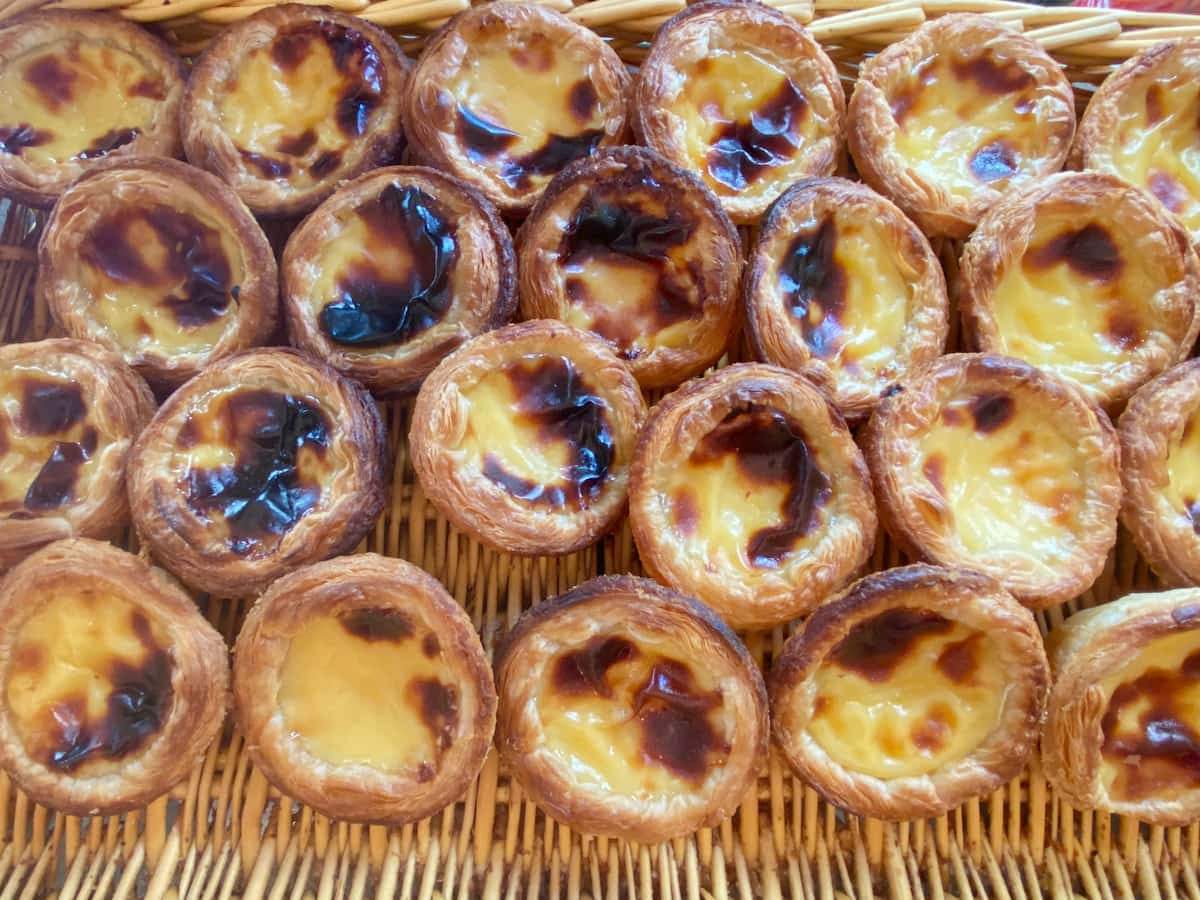
More Custard Tarts - French Style
Although Portugal is the country where the most popular custard tarts are from, there's also a delicious French apple custard tart from Alsace in France. Although fabulous with apples, it's not the same!
Easy Recipe for Custard Tarts
To taste the genuine Pastéis de nata in Paris, we love to buy them at Comme à Lisbonne.
We can make them easily at home, although I cheat and use ready-made puff pastry. There's nothing wrong with that. Although please use a good quality all-butter puff pastry otherwise it's just not great. I use either defrosted (here in France, Picard do a good frozen puff), or ready-rolled (these are in packets of 230g and so easy to use).
Top Tip: In France, the best is to ask your local boulangerie (bakery) for their homemade puff pastry. You'll be surprised that they don't mind selling it, as long as you order in advance.
If not ready-rolled, just roll out the pastry to 3-5mm thickness and cut out your circles according to the recipe below.
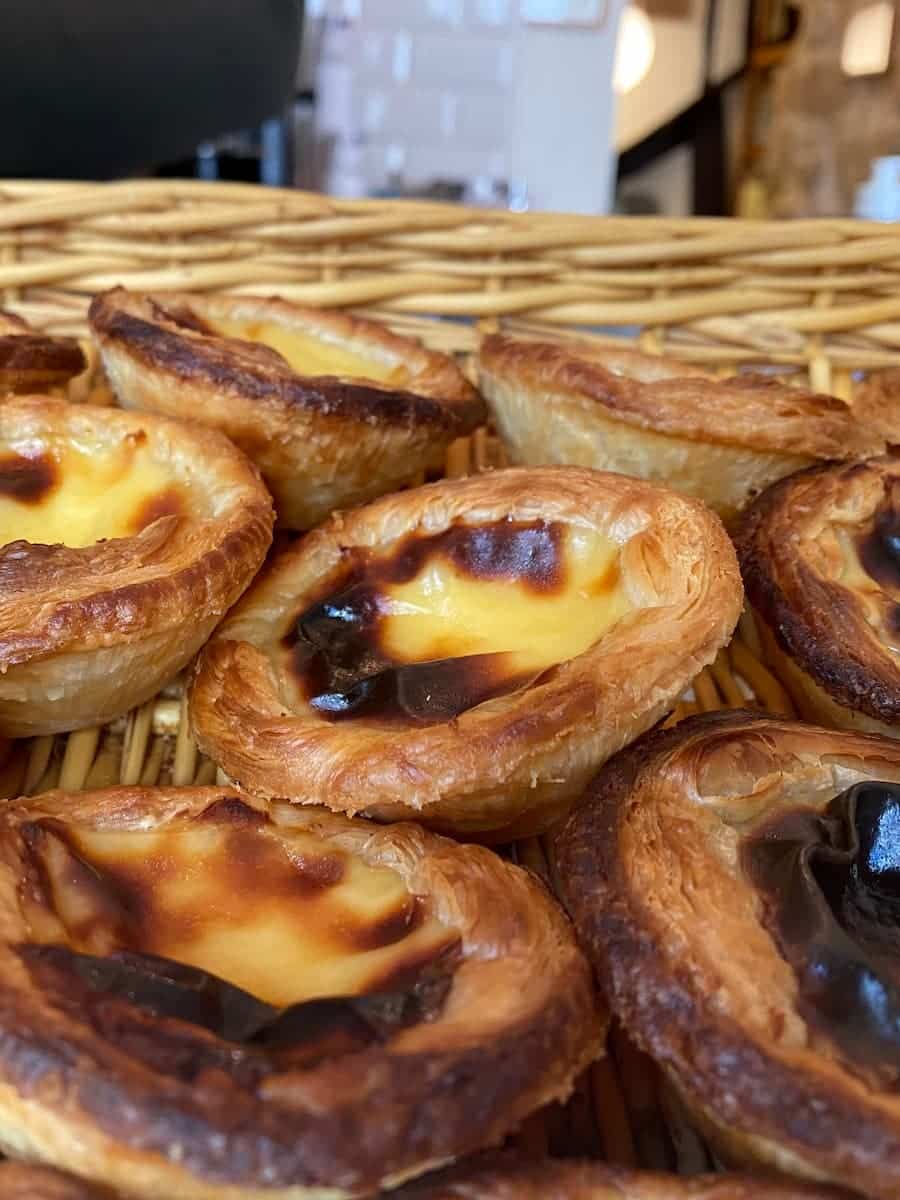
Baking Pastéis de Natas
One factor that's not easy to control is the traditional extra hot oven needed to make traditional sized custard tarts more genuine looking. As not all of our home kitchen ovens can go up as high as professional ovens to give them that beautifully scorched look, put it as high as you can - and keep an eye on them!
I'd suggest 7-10 minutes if it's very hot, otherwise for about 10-15 minutes.
How to Make Pastéis de Nata
Recipe inspired by Denise Browning at EasyandDelish, who adapted it from the cookbook, "Cozinha Tradicional Porguguesa". Denise made mini tarts, whereas I made a slightly bigger, more traditional size like they serve at Comme à Lisbonne and Manteigaria in Paris. So I used half quantity to fill regular muffin moulds, and cut down the sugar slightly, using a vanilla pod/bean instead of the extract.
Makes 12 tartlets (using 2x 6-cavity non-stick muffin moulds @ 7cm diameter)
1. Chill a bowl in the fridge. Put the egg yolks, sugar, cornflour and vanilla seeds (scraped from a pod cut in half down the middle horizontally) in a saucepan and mix well using a balloon whisk until you have a creamy paste. Gradually add the milk, whisking until mixed well together.
2. Put the pan on a medium heat and whisk constantly until the mixture thickens. Remove pan from the heat. (If you don't use the vanilla pod, add the extract at this point and taste test - see notes in the recipe card below).
Transfer the custard to the chilled bowl and immediately cover it with cling film to prevent a skin from forming. Set aside to cool.
3. Lightly oil or butter the muffin moulds and preheat the oven preferably to the highest setting - I used 250°C/480°F/230°C mark 9.
4. On a lightly floured surface - roll the pastry if needed - using a cookie cutter or glass (about 9cm diameter, slightly bigger than the 7cm diameter muffin cavity), cut out discs and press them into each cavity. Spoon in the cooled custard about ¾ to the top then bake for 7-10 minutes.
Keep an eye on them! You want them slightly scorched but not completely.
5. Leave to cool in the moulds/tins for about 5 minutes then turn them out on to a wire rack.
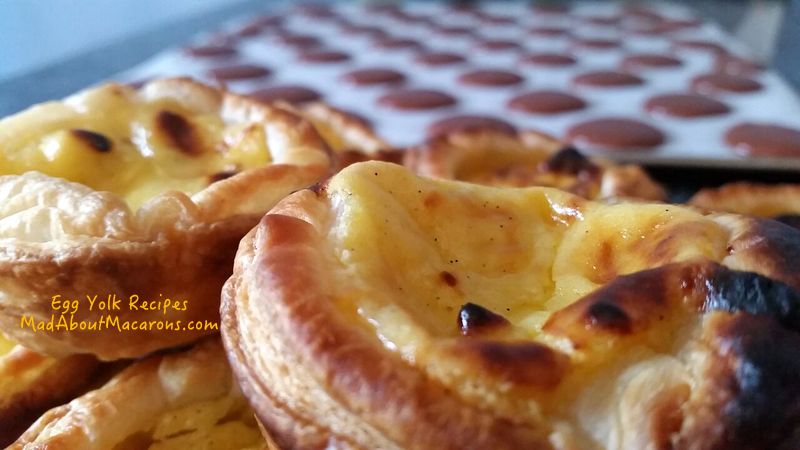
Don't waste your whites - keep in the fridge for up to 5 days or freeze and use them in these egg white recipes.

Do you Eat Pastel de Nata Hot or Cold?
As there are many Portuguese living in and around Paris, we are spoiled to see Pastéis de nata (or Pastel de nata) regularly in our local boulangeries.
Served cold but even better, serve slightly warm as they do at the bakery in Paris.
As they do in Portugal, lightly dust with cinnamon.

Pastéis de Nata Custard Tarts
Ingredients
- 4 egg yolks organic
- 75 g (2½oz) sugar
- 15 g (1 tbsp) cornflour/cornstarch
- 1 vanilla pod/bean scraped of seeds (or 1 teaspoon vanilla extract/powder)*
- 250 ml (1 cup) whole milk
- 230 g (8oz) puff pastry 1 pack of ready-rolled or a pack of frozen puff, defrosted
- Powdered cinnamon to serve
Instructions
- Chill a bowl in the fridge. Off the heat, whisk together the egg yolks, sugar, cornflour and vanilla extract or seeds (scraped from a pod cut in half down the middle horizontally) in a saucepan using a balloon whisk until you have a creamy paste. Gradually add the milk, whisking until mixed well together.
- Put the pan on a medium heat and whisk constantly until the mixture thickens. Remove pan from the heat. (If you don’t use the vanilla pod, add the extract or powder at this point). Transfer the custard to the chilled bowl and immediately cover it with cling film to prevent a skin from forming. Set aside to cool.
- Lightly oil or butter the muffin moulds and preheat the oven - preferably to the highest setting at 250°C/480°F/230°C mark 9.
- On a lightly floured surface – roll the pastry if needed – using a cookie cutter or glass (about 9cm diameter, slightly bigger than the 7cm diameter muffin cavity), cut out discs and press them into each cavity. Spoon in the cooled custard about ¾ to the top then bake for 7-10 minutes until the custard is blistered on the top.
- Leave to cool in the moulds/tins for about 5 minutes then turn them out on to a wire rack.
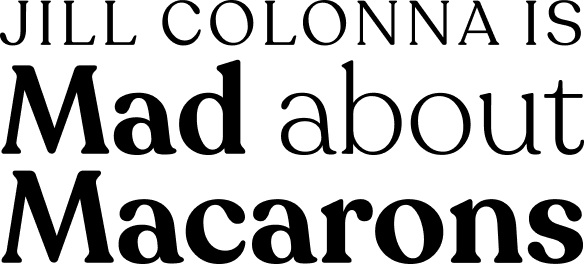

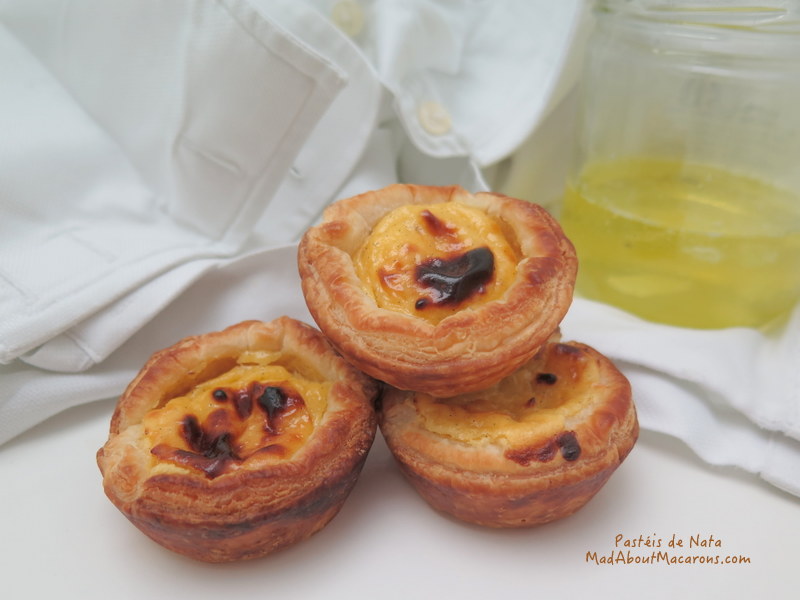
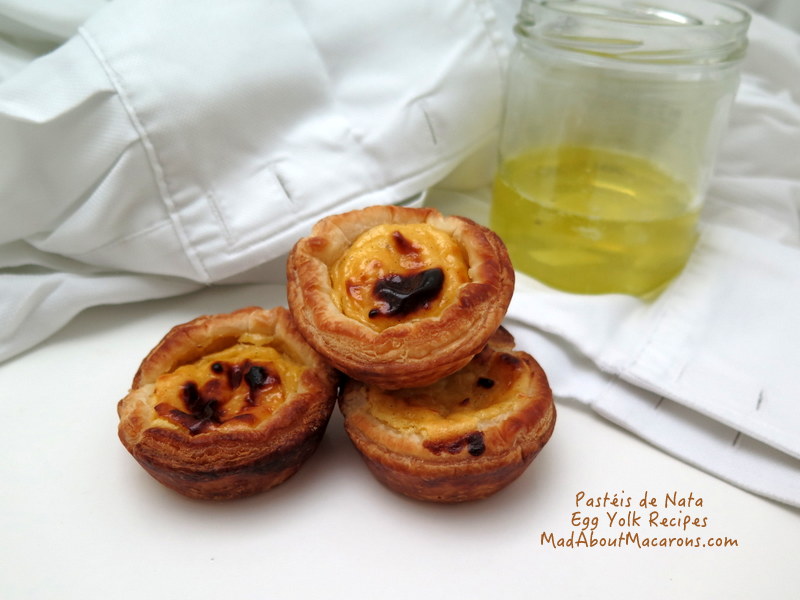
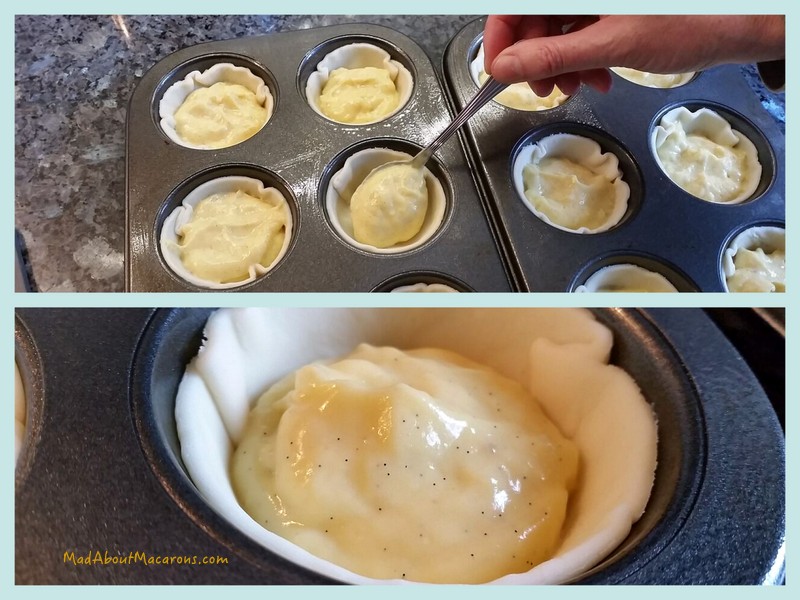


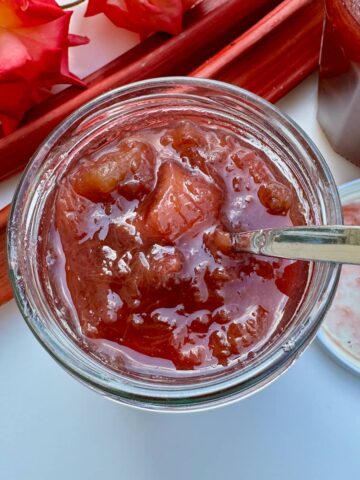
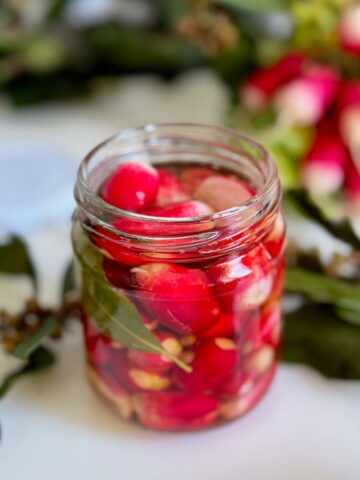
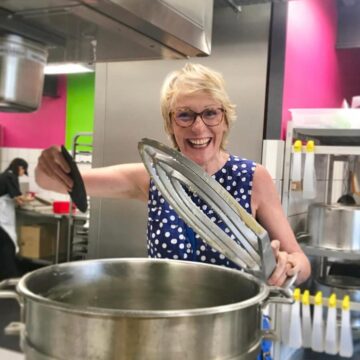
Sue Turner
Your recipe is my favourite go to recipe for these and never last long when I've family around!
Jill Colonna
So lovely to hear this - thanks so much for your feedback, Sue.
L
How many teaspoons of vanilla extract do we use, I don’t have a pod.
Jill Colonna
I'd say use just a teaspoon, as it depends what brand you use and quality. For a whole pod, it could be up to a tablespoon but if it's too much in the end, you can't adjust. Start with a teaspoon, taste and decide if you need to add more. Thanks for asking - I've updated the recipe card notes to explain.
Liz
Your custard filled tarts are gorgeous!! And easy to make, too. Bill would love them as much as I would 🙂
Jill Colonna
Thanks, Liz. It's a win-win at easy and delicious, isn't it?
Parisbreakfast
YUM I love these so much. I'm not sure I could be trusted around too many of them. I buy them at the Bastille marche on Sundays..
Jill Colonna
I'm like you, Carol. Not to be trusted around them since they're so good. It's not for nothing that I halved the quantities to make just 12 but now we're wanting more ...
Denise Browning@From Brazil To You
Hi, Jill! Thank you for linking back to me. I am glad that you enjoyed the recipe and made the adjustments according to your taste!
Although these custards tarts are originally from Portugal, they are very popular in Brazil, my home country.
There are 2 versions of these tarts down in Brazil... and I adopted the less traditional (adapted) in terms of look... This is why mine doesn't look like yours! 🙂 In Brazil, there is one version with puff pastry and other with flat crust, more similar to a tart/pie crust. Although I shared the traditional recipe (because I called it Portuguese), I flatten and thinned my puff pastry to adapt to my taste because I made the custard tarts mini.:) If I have not done that, I confess I would have thrown all of them in the trash after photographing them. Why? The result would have been more pastry than custard -- which I absolutely hate in a custard tart. When I make them regular-sized, they look like yours, very traditional look. The regular-sized ones seem to have a balance between the puff pastry and custard that is more noticeable. .
The high temps work best for the regular-sized tarts, I have to say.I hate the curdled texture of the custard that some Portuguese custard tarts present. I prefer mine smooth, and as for mini tarts, high temps can be a real problem. I removed mine slight before they started to get that scorched look on top. Mine looks like the less traditional version that we have in Brazil (and the egg tarts from China in terms of custard, not crust).
Wishing you a great week!
Jill Colonna
Hi Denise
This can sound pretty complicated with different versions in Brazil alone but one thing is for sure - we adore these delicious and regular, traditional custard tarts, just like the ones at Comme à Lisbonne in Paris. Thanks for your explanation of the Brazil-like non-traditional mini versions: you've given us an excuse to visit and taste scorched vs non-scorched and decide on the difference. Wouldn't it be wonderful to compare with the differing variations of this tart around the world? Now that is a new challenge 🙂 Vive les Pastéis de Nata!
Denise Browning@From Brazil To You
Jill:
Since you made the traditional version, I'd love that you try the mini non-traditional version, and also the Chinese one. I have my fave but It'd be interesting to hear from you which one would you pick as your favorite after trying them all. 🙂
Only to let you know that even the Portuguese traditional version, in Portugal itself, people can choose if they want theirs with a smooth or curdled custard, if they want the top sprinkled with cinnamon, sugar, or nothing at all. 🙂
Jill Colonna
Thank you so much for sharing your expertise advice here, Denise. I shall try to make the non-traditional later but would like to taste the different versions in their surroundings. After going to Comme à Lisbonne in Paris, I just wanted to make the simple, traditional version a bit like they did. They didn't offer if I wanted the custard smooth or curdled - they only asked if I wanted cinnamon to go with it. C'est tout. I hope to go to Portugal and try the experience - and Brazil, and China...
Jill Colonna
Would you believe it? We're off to Brazil on holiday tomorrow! Yay. Will have to report back to you, Denise!